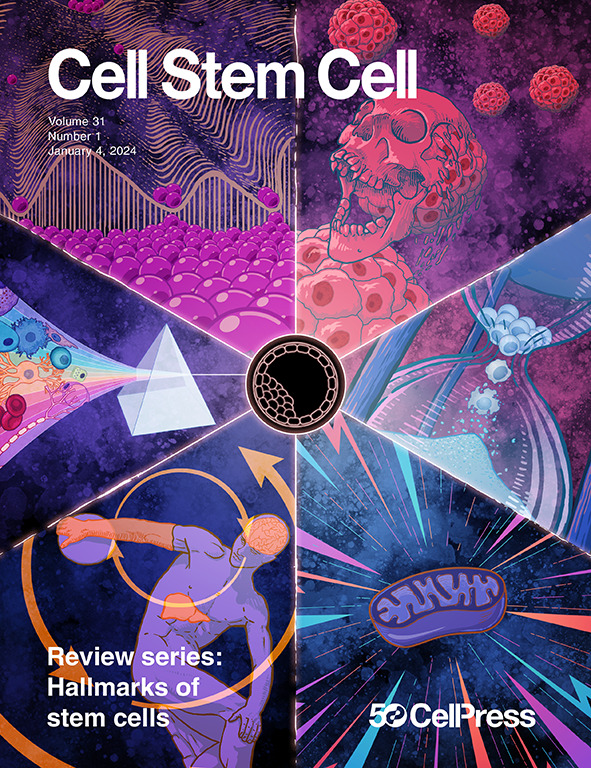HBO1 functions as an epigenetic barrier to hepatocyte plasticity and reprogramming during liver injury
IF 20.4
1区 医学
Q1 CELL & TISSUE ENGINEERING
引用次数: 0
Abstract
Hepatocytes can reprogram into biliary epithelial cells (BECs) during liver injury, but the underlying epigenetic mechanisms remain poorly understood. Here, we define the chromatin dynamics of this process using single-cell ATAC-seq and identify YAP/TEAD activation as a key driver of chromatin remodeling. An in vivo CRISPR screen highlights the histone acetyltransferase HBO1 as a critical barrier to reprogramming. HBO1 is recruited by YAP to target loci, where it promotes histone H3 lysine 14 acetylation (H3K14ac) and engages the chromatin reader zinc-finger MYND-type containing 8 (ZMYND8) to suppress YAP/TEAD-driven transcription. Loss of HBO1 accelerates chromatin remodeling, enhances YAP binding, and enables a more complete hepatocyte-to-BEC transition. Our findings position HBO1 as an epigenetic brake that restrains YAP-mediated reprogramming, suggesting that targeting HBO1 may enhance hepatocyte plasticity for liver regeneration.

HBO1是肝损伤过程中肝细胞可塑性和重编程的表观遗传屏障
肝损伤过程中肝细胞可重编程为胆道上皮细胞(BECs),但其潜在的表观遗传机制尚不清楚。在这里,我们使用单细胞ATAC-seq定义了这一过程的染色质动力学,并确定YAP/TEAD激活是染色质重塑的关键驱动因素。一项体内CRISPR筛选显示,组蛋白乙酰转移酶HBO1是重编程的关键障碍。HBO1被YAP招募到目标位点,在那里它促进组蛋白H3赖氨酸14乙酰化(H3K14ac),并参与染色质读取器锌指MYND-type containing 8 (ZMYND8)抑制YAP/ tead驱动的转录。HBO1的缺失加速了染色质重塑,增强了YAP的结合,并使肝细胞更完整地转变为bec。我们的研究结果表明HBO1是一种抑制yap介导的重编程的表观遗传制动,这表明靶向HBO1可能会增强肝细胞的可塑性,从而促进肝脏再生。
本文章由计算机程序翻译,如有差异,请以英文原文为准。
求助全文
约1分钟内获得全文
求助全文
来源期刊

Cell stem cell
生物-细胞生物学
CiteScore
37.10
自引率
2.50%
发文量
151
审稿时长
42 days
期刊介绍:
Cell Stem Cell is a comprehensive journal covering the entire spectrum of stem cell biology. It encompasses various topics, including embryonic stem cells, pluripotency, germline stem cells, tissue-specific stem cells, differentiation, epigenetics, genomics, cancer stem cells, stem cell niches, disease models, nuclear transfer technology, bioengineering, drug discovery, in vivo imaging, therapeutic applications, regenerative medicine, clinical insights, research policies, ethical considerations, and technical innovations. The journal welcomes studies from any model system providing insights into stem cell biology, with a focus on human stem cells. It publishes research reports of significant importance, along with review and analysis articles covering diverse aspects of stem cell research.
 求助内容:
求助内容: 应助结果提醒方式:
应助结果提醒方式:


